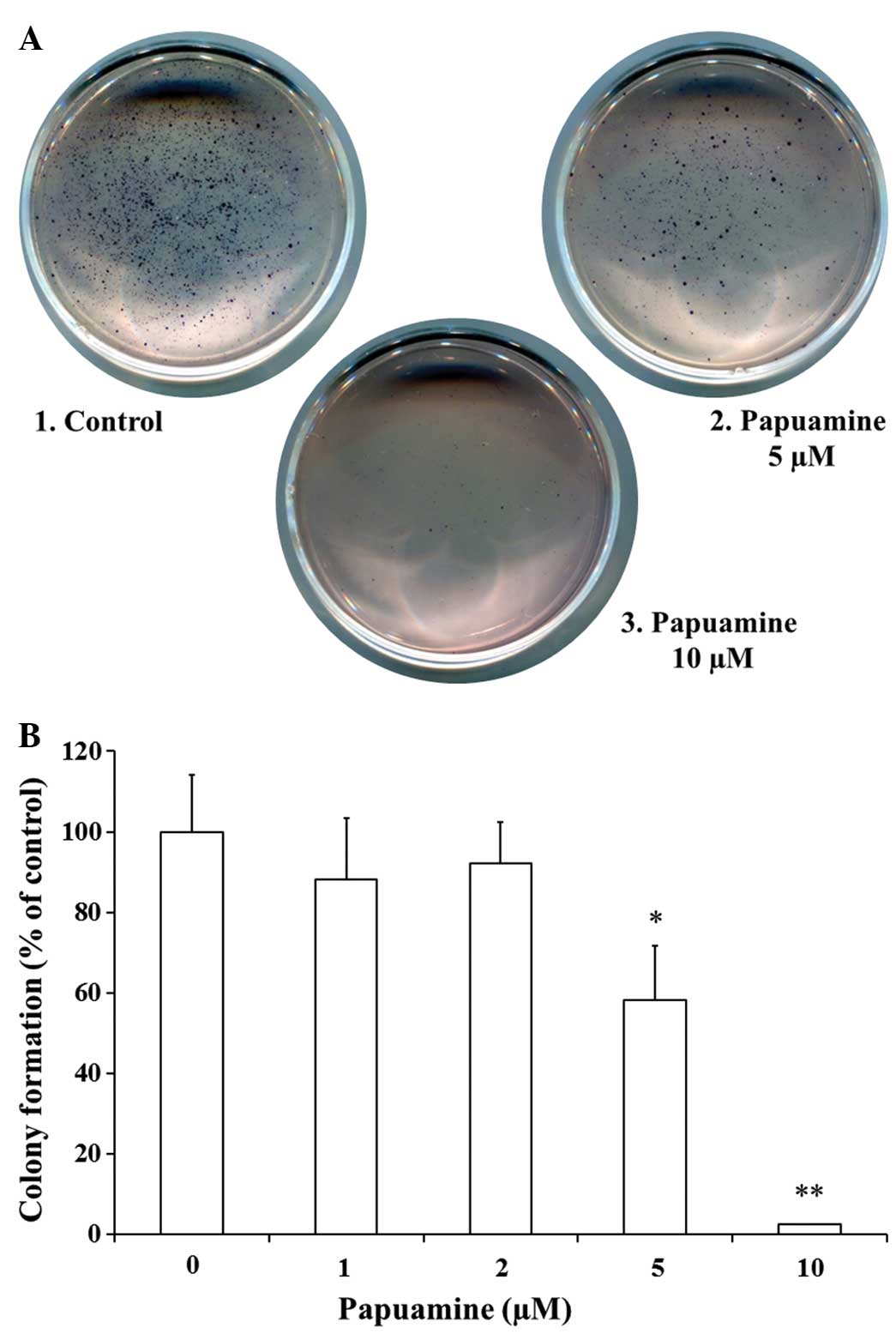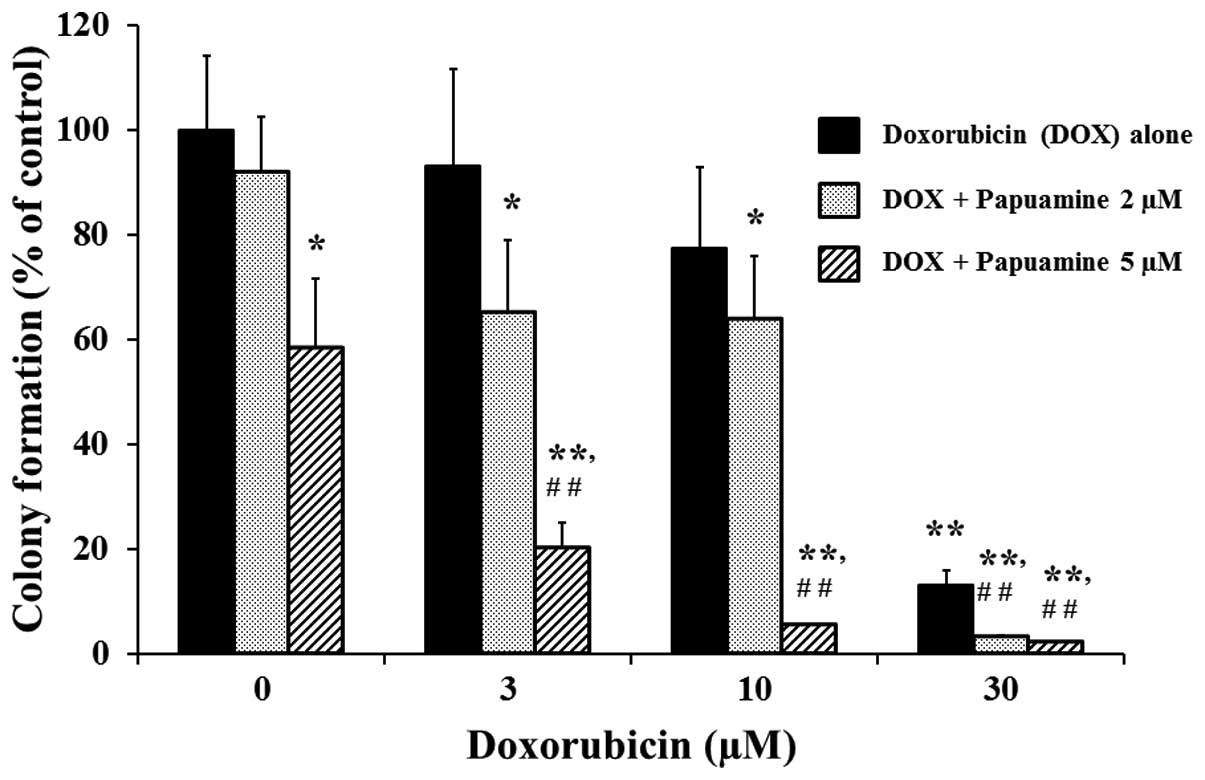Combined effect of papuamine and doxorubicin in human breast cancer MCF‑7 cells
- Authors:
- Published online on: June 3, 2014 https://doi.org/10.3892/ol.2014.2218
- Pages: 547-550
Metrics: Total
Views: 0 (Spandidos Publications: | PMC Statistics: )
Total PDF Downloads: 0 (Spandidos Publications: | PMC Statistics: )
Abstract
Our previous study reported that an extract of an Indonesian marine sponge, Haliclona sp., showed potent cytotoxicity and induced apoptosis. The major cytotoxic chemical compound was identified as papuamine, which caused reduction of cell survival through activation of c‑Jun N‑terminal kinase (JNK) in human breast cancer MCF‑7 cells. Doxorubicin (DOX), a Streptomyces metabolite, is used in chemotherapy against a wide range of cancers, including breast cancer. The present study examined the combined effect of papuamine and DOX on MCF‑7 cells. The effect of these reagents on cell growth was assessed by a colony formation assay. Incubation with either of the reagents alone resulted in concentration‑dependent decreases in the colony formation of the MCF‑7 cells. Incubation with the reagents together at sub‑cytotoxic concentrations resulted in significant decreases in colony formation. The phosphorylation of JNK, the activated form of the protein, was elevated in a concentration‑dependent manner upon co‑incubation with papuamine and DOX. Fluorescence intensity analysis demonstrated that papuamine caused a small, but non‑significant, decrease in cellular accumulation of DOX. These results indicate that the combinatory effect of papuamine and DOX is not associated with changes in the cellular accumulation of DOX, and may instead reflect additive effects on JNK activation. This study indicates that papuamine may represent a novel type of modulator for DOX chemotherapy.













